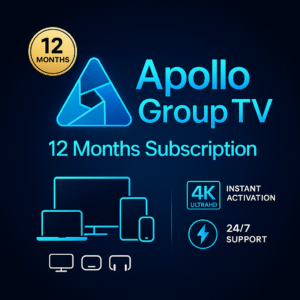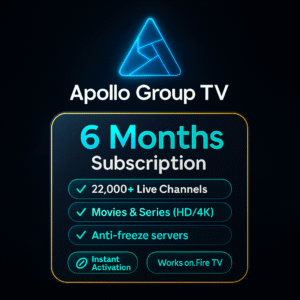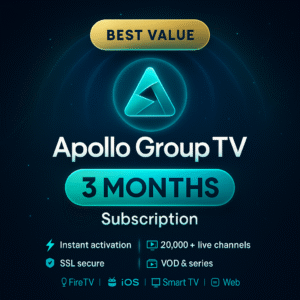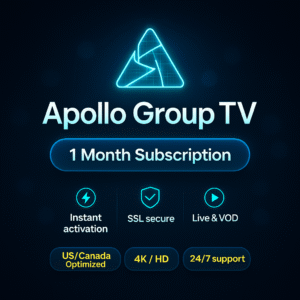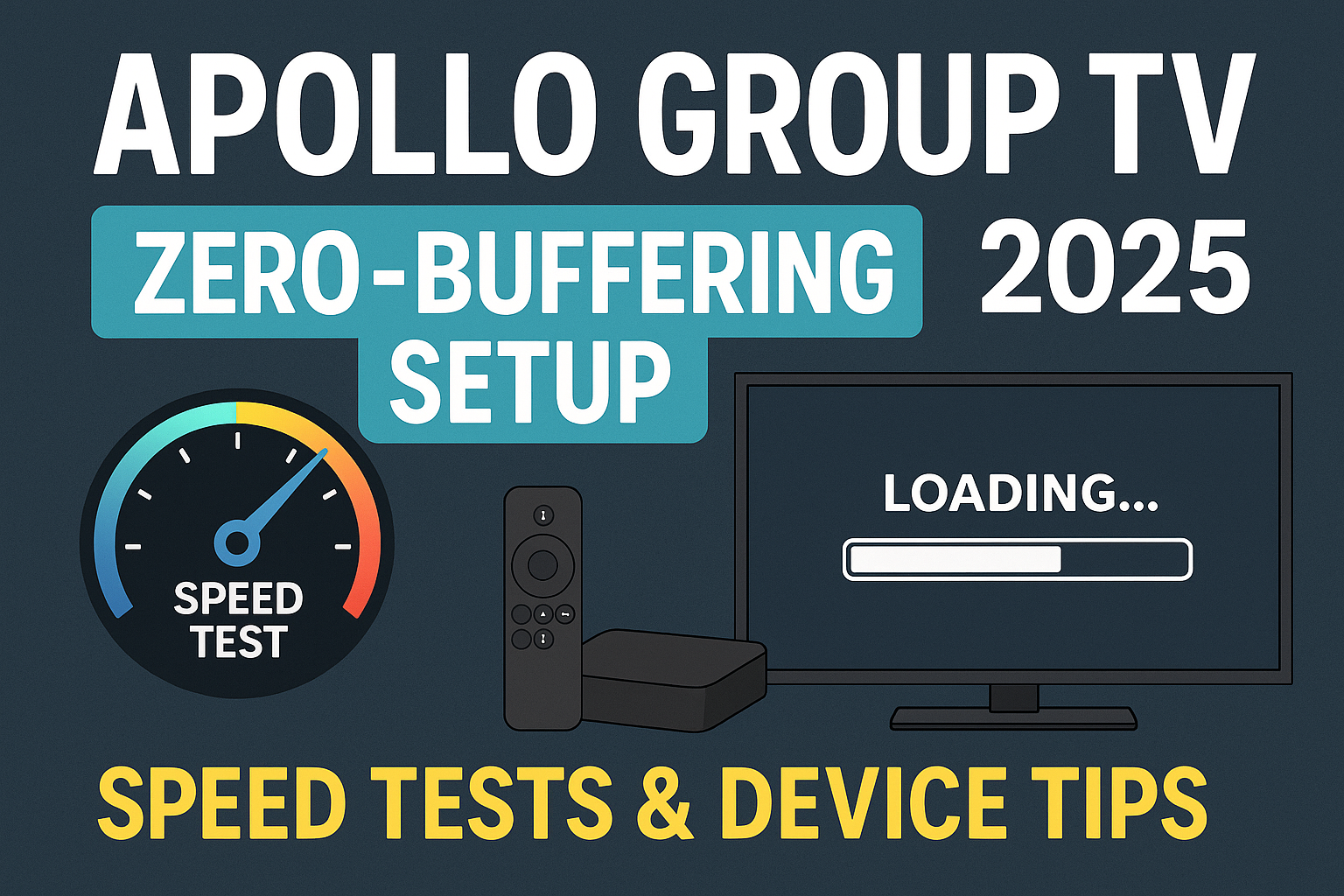Apollo Group TV: Zero-Buffering Setup, Speed Tests & Device Tips (2025)
If you just subscribed to apollo group tv (or you’re optimizing your setup), use this step-by-step playbook to get buttery-smooth streams: device picks, Wi-Fi tuning, speed targets, and a quick troubleshooting tree.
Best devices for apollo group tv
Any modern device works, but some combinations deliver a notably better experience—especially for live events.
| Device | Why it’s great | Tip |
|---|---|---|
| Fire TV / Android TV stick TV | Easy to set up, good codecs, reliable with 5 GHz Wi-Fi. | Prefer Ethernet adapters for big match days. |
| Android phone / tablet Mobile | Fast to install and test; great for VOD and on-the-go. | Enable hardware decoding in player settings. |
| iOS / iPadOS Mobile | Consistent performance in the native app or Web Player. | Allow local-network access when prompted. |
| Web Player (laptop/desktop) Web | No install required—perfect for quick access and testing. | Use wired Ethernet for the most stable results. |
Wi-Fi & network setup
Checklist
- Use a 5 GHz SSID (avoid crowded 2.4 GHz).
- Place the router in open space; avoid inside cabinets.
- Limit concurrent heavy downloads or cloud backups.
- For TVs, Ethernet is best for big events.
Advanced tips
- Set Wi-Fi channel width to 40/80 MHz where stable.
- Enable QoS (traffic priority) for your streaming device.
- Restart the router weekly to refresh channels and caches.
If you suspect ISP throttling, compare performance on your mobile hotspot or test a reputable VPN.
Recommended speed tests
For a smooth experience with apollo group tv, aim for these ballpark numbers per active stream:
- HD (720p/1080p): ~15 Mbps
- 4K: ~25 Mbps
Run tests on the actual device (or the same network segment). If Wi-Fi varies, do multiple tests at different times of day.
Player tuning (quality/decoding)
Most players default to smart settings, but small tweaks can improve stability on certain devices.
- Decoding mode: try Hardware first; switch to Software if you see artifacts.
- Quality: use Auto on variable networks; lock a lower resolution for congested hours.
- Audio: if silent, change track to Stereo/PCM.
- EPG/VOD refresh: clear cache and re-fetch guide/categories after updates.
Live events strategy (sports & PPV)
- Connect TVs via Ethernet or position the router closer to the screen.
- Open the event 5–10 minutes early and keep a backup route in your favorites.
- Close background downloads on the same network.
- If a route is congested, switch to another and return later.
Troubleshooting tree
Buffering / stutter
- Test another channel to rule out a single-route issue.
- Switch decoding mode; lower quality to stabilize.
- Move to 5 GHz/Ethernet; pause other heavy traffic.
No audio / wrong track
- Cycle audio tracks; set output to Stereo/PCM.
- Check TV/receiver sound mode and CEC settings.
Guide (EPG) missing
- Refresh EPG in player; clear metadata cache.
- Restart the app and router.
FAQ: optimizing apollo group tv
What’s the ideal setup for live sports?
Ethernet to your TV stick or box, 5 GHz Wi-Fi as backup, and quality on Auto. Keep a second route favorited.
How many devices can I use?
Install the app on multiple devices, but one connection supports one active stream. Add extra connections if you need simultaneous streams.
Do you offer VOD and an EPG?
Yes—movies/series library (many in HD/4K) and an electronic program guide where available.
Can a VPN help with buffering?
If your ISP shapes video traffic, a reputable VPN may improve stability. Test against your normal connection first.
